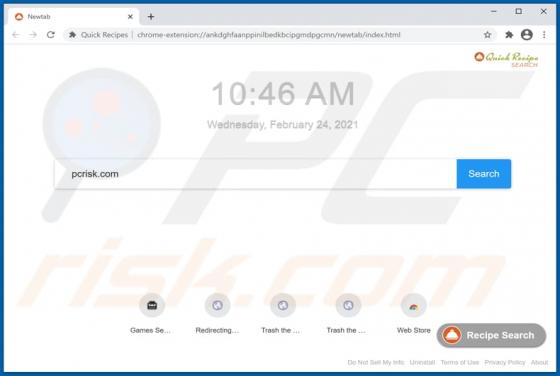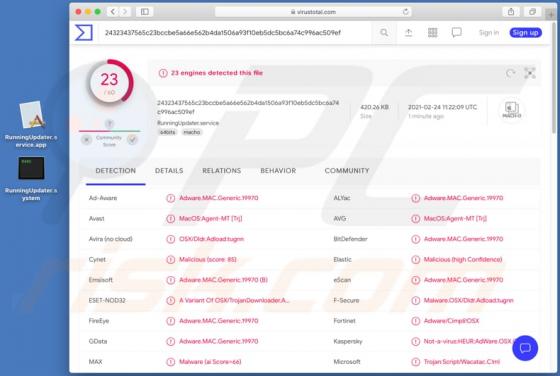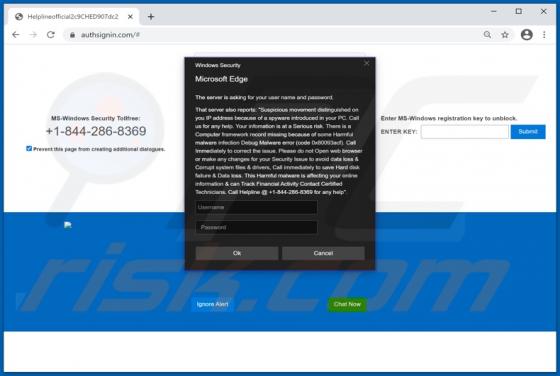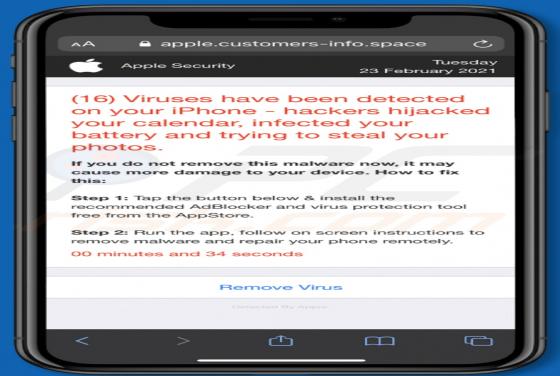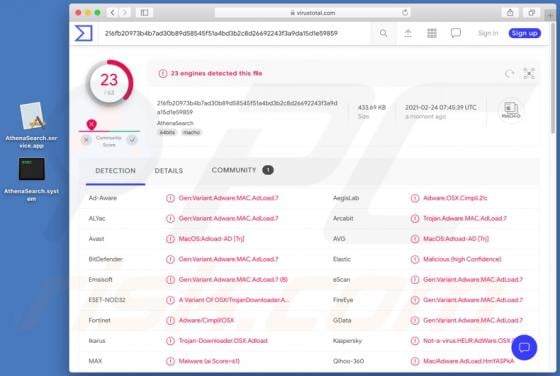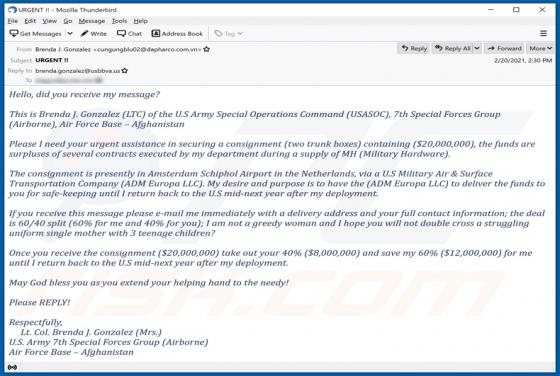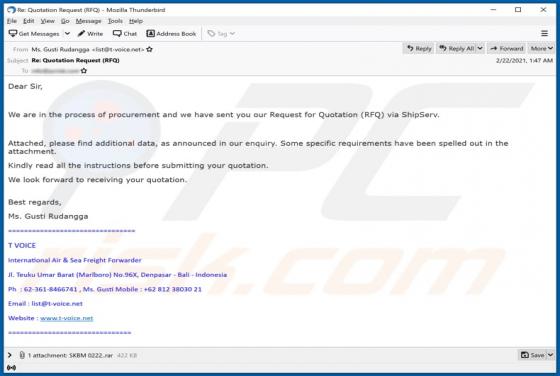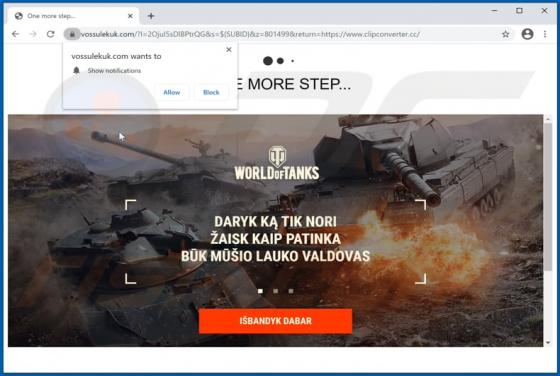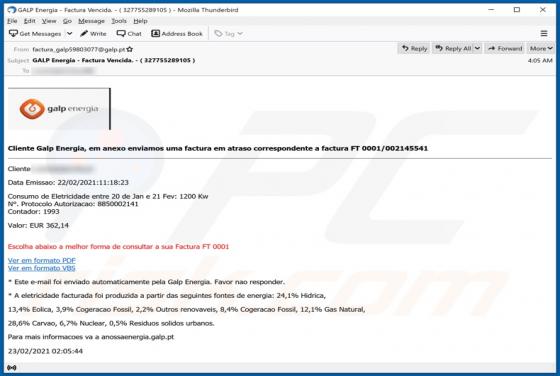
Galp Energia Email Virus
"Galp Energia email virus" refers to a spam campaign designed to spread malware (malspam). The term "spam campaign" defines a mass-scale operation during which scam emails are sent by the thousand. The messages distributed through this campaign are disguised as notifications concerning an overdue
